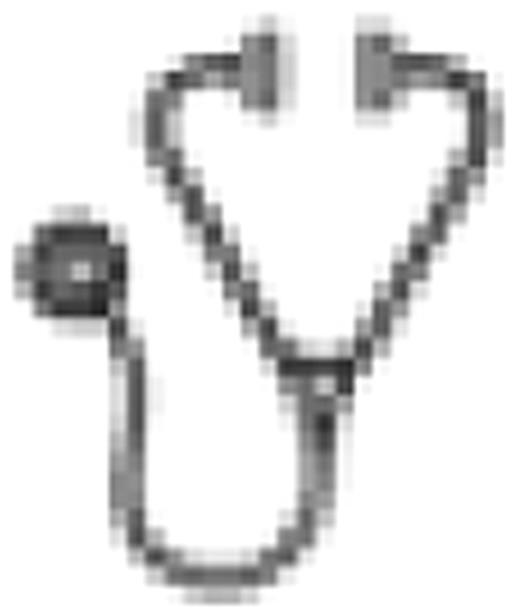Abstract
Abstract 359
Nilotinib is a potent and selective inhibitor of BCR-ABL. In the phase 3 ENESTnd trial, nilotinib demonstrated superior efficacy to imatinib with higher and faster molecular responses. With a median follow-up of 18.5 months (ASCO/EHA 2010), the rates of progression to accelerated or blast phase (AP/BC) were 0.7% and 0.4% with nilotinib 300 mg and 400 mg BID, respectively, and significantly lower in comparison to imatinib (4.2% P = .006 and .003, respectively). Based on the results of the ENESTnd trial, nilotinib has been approved (FDA) for the frontline treatment of Ph+ CML. With imatinib 400 mg (IRIS trial), the rate of any event and the rate of progression to AP/BC were higher during the first 3 years on treatment (15.6% and 6.1%, respectively). Consequently, a confirmation of the durability of nilotinib responses at 3 years is extremely important.
To evaluate responses (either cytogenetic and molecular) and to investigate outcomes of patients treated for 3-years with nilotinib 400 mg BID as frontline therapy. Outcomes evaluated include Overall Survival (OS), Progression-Free Survival (PFS), Failure-Free Survival (FFS) and Event-Free Survival (EFS).
A multicentre phase 2 trial (nilotinib 400 mg BID) was conducted by the GIMEMA CML Working Party (ClinicalTrials.gov.NCT00481052). The median follow-up is currently 30 months (3 years by November 2010). Definitions: Major Molecular Response (MMR): BCR-ABL/ABL ratio < 0,1% IS; Complete Molecular Response (CMR): undetectable transcript levels and nested PCR negative; failures: no CHR at 3 months, no CgR at 6 months, no PCgR at 1 year, no CCgR at 18 months, loss CHR or CCgR, progression and death (according to the revised European LeukemiaNet recommendations); events: failures and treatment discontinuation for any reason. All the analysis has been made according to the intention-to-treat principle.
73 patients have been enrolled; median age 51 years (range 18–83); 45% low, 41% intermediate and 14% high Sokal risk. The cumulative CCgR rate (primary endpoint) at 12 months was 100%. CCgR at each milestone: 78% at 3 months, 96% at 6, 12 and 18 months, 92% at 24 months. The cumulative rate of MMR was 96%, while the rates of MMR at 3, 6, 12, 18 and 24 months were 52%, 66%, 85%, 81% and 82%, respectively. The cumulative rate of CMR was 41%, while the rates of CMR at 12 and 24 months were 7% and 12%, respectively. None of the patients who achieved a MMR progressed to AP/BC. Only one patient progressed at 6 months to AP/BC: a 63 years old female with a high Sokal risk disease in CCgR at 3 months, who developed a T315I mutation. During the first 12 months, the mean daily dose was 600–800 mg, 400–599 mg, and less than 400 mg in 74%, 18% and 8% of patients, respectively. The nilotinib last daily dose was as follows: 800 mg in 48 (71%) patients, 400 mg in 19 (28%) patients and 200 mg in 1 (1%) patient. Adverse events (AEs) were mostly grade 1 or 2 and manageable with appropriate dose adaptations. Two patients (3%) showed a prolongation of the QTcF above 450 msec (none above 50 msec). Four events lead to permanent discontinuation of nilotinib: 3 patients discontinued after 9, 15 and 27 months on treatment for recurrent episodes of amylase and/or lipase increase (no pancreatitis) and 1 patient after 25 months due to atrial fibrillation, unrelated to study drug. Three of them are currently on imatinib second-line and 1 on dasatinib third-line. Overall, 5 events have been recorded so far (1 progression to AB/BC and 4 permanent discontinuation of nilotinib due to AEs). At 30 months the OS, PFS and FFS are 99% and the EFS is 92%.
The rate of failures was very low during the first 3 years. Responses remain stable. The very high rates of responses achieved during the first 12 months on treatment are being translated into optimal outcome for most of the patients. Acknowledgments: European LeukemiaNet, COFIN, Bologna University, BolognAIL
Rosti:Novartis: Consultancy, Membership on an entity's Board of Directors or advisory committees, Research Funding, Speakers Bureau; Bristol Myers Squibb: Honoraria, Speakers Bureau; Roche: Speakers Bureau. Castagnetti:Novartis: Honoraria; Bristol Myers Squibb: Honoraria. Gugliotta:Novartis: Honoraria. Saglio:Novartis: Consultancy, Membership on an entity's Board of Directors or advisory committees, Research Funding, Speakers Bureau; Bristol Myers Squibb: Membership on an entity's Board of Directors or advisory committees, Speakers Bureau. Martinelli:Novartis: Consultancy, Honoraria; Bristol Myers Squibb: Consultancy, Honoraria; pfizer: Consultancy. Baccarani:Novartis: Consultancy, Research Funding, Speakers Bureau; Bristol Myers Squibb: Consultancy, Research Funding; Wyeth: Consultancy, Research Funding.

This icon denotes an abstract that is clinically relevant.
Author notes
Asterisk with author names denotes non-ASH members.

